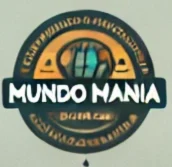
#image_title
Nestled in the heart of Andalusia, Córdoba is a city that holds centuries of history and a wealth of cultural treasures. Once the capital of the Moorish empire in Spain, Córdoba showcases a blend of Roman, Islamic, and Spanish influences, making it a unique destination for history and culture lovers. Here’s your guide to Córdoba’s top historic sites and cultural experiences that capture the essence of this captivating Andalusian city.
Iconic Historic Sites in Córdoba
Córdoba’s historic landmarks are some of the most impressive in Spain, reflecting the city’s diverse past and architectural brilliance. These top sites offer a glimpse into Córdoba’s fascinating history.
La Mezquita (The Mosque-Cathedral of Córdoba)

The Mezquita is Córdoba’s most iconic landmark and one of the world’s finest examples of Islamic architecture. Built as a mosque in the 8th century and later converted into a cathedral, the Mezquita is renowned for its forest of red-and-white striped arches, intricate mosaics, and the stunning mihrab (prayer niche). Visitors can marvel at the unique blend of Christian and Islamic elements throughout the building, symbolizing the city’s multicultural heritage.
Alcázar de los Reyes Cristianos
The Alcázar de los Reyes Cristianos (Castle of the Christian Monarchs) is a fortified palace that once served as the residence of Catholic monarchs Ferdinand and Isabella. Surrounded by beautiful gardens and courtyards, this fortress offers stunning views of the Guadalquivir River and the city. Inside, you’ll find Roman mosaics, impressive halls, and historic artifacts that showcase Córdoba’s medieval past.
Roman Bridge of Córdoba
Spanning the Guadalquivir River, the Roman Bridge has been a crucial part of Córdoba’s infrastructure since the 1st century BC. Originally built by the Romans, it was later modified by the Moors and has since become a symbol of the city. The bridge offers beautiful views of the Mezquita and the cityscape, making it an ideal spot for sunset walks and photography.
Jewish Quarter (La Judería)
Córdoba’s Jewish Quarter, or La Judería, is a historic neighborhood filled with narrow cobblestone streets, whitewashed buildings, and traditional courtyards adorned with colorful flowers. Key sites within the Jewish Quarter include the Córdoba Synagogue, one of the only remaining medieval synagogues in Spain, and the Casa de Sefarad, a museum dedicated to Sephardic Jewish culture. Wandering through La Judería provides a glimpse into Córdoba’s diverse past.
Cultural Experiences in Córdoba
Beyond its historic landmarks, Córdoba is a city rich in cultural experiences. Here are some unique ways to immerse yourself in the city’s vibrant culture.
Patios of Córdoba
Córdoba is famous for its patios, traditional Andalusian courtyards that are beautifully decorated with flowers, fountains, and tiles. Each spring, the Patio Festival (Festival de los Patios) celebrates these colorful spaces, with locals opening their courtyards to the public. The festival is a UNESCO-recognized event that offers a stunning display of flowers and showcases Córdoba’s deep-rooted patio tradition.
Flamenco Shows
As the birthplace of flamenco, Andalusia is one of the best places to experience this passionate art form. Córdoba hosts a variety of flamenco shows in intimate venues across the city. Visit Tablao El Cardenal or Casa de la Memoria to enjoy an authentic flamenco performance, complete with live guitar, singing, and traditional dancing that captures the spirit of Andalusian culture.
Medina Azahara
Located just outside Córdoba, Medina Azahara is an ancient city built in the 10th century by the Caliph of Córdoba. Once a symbol of the city’s grandeur, this archaeological site now offers a fascinating look at Islamic art and architecture. Wandering through the ruins of palaces, mosques, and gardens, visitors can imagine the splendor of Córdoba during its height as a Moorish capital.
Culinary Highlights in Córdoba
Córdoba’s cuisine is influenced by Moorish, Jewish, and Christian traditions, creating a unique array of flavors and dishes. Here are some local specialties to try:
Salmorejo
Salmorejo is a refreshing cold soup made from tomatoes, bread, olive oil, and garlic, typically garnished with ham and hard-boiled eggs. This creamy dish is a local favorite, especially during the warm summer months, and can be found in most tapas bars and restaurants in Córdoba.
Flamenquín
A traditional dish of Córdoba, Flamenquín is made by wrapping a slice of ham and cheese inside a piece of pork loin, then breading and frying it. Served with a side of fries or salad, this flavorful dish is a delicious representation of the city’s culinary traditions.
Rabo de Toro
Rabo de Toro (oxtail stew) is a popular dish in Córdoba, made with slow-cooked oxtail, red wine, and vegetables until tender. This hearty stew is rich in flavor and a must-try for those who want to experience authentic Andalusian comfort food.
Travel Tips for Visiting Córdoba
- Best Time to Visit: Spring (April to June) is the best time to visit Córdoba, as the weather is pleasant and the city hosts events like the Patio Festival and the Cruces de Mayo festival.
- Get the Córdoba Card: This card provides discounts and free access to top attractions, including the Mezquita, Alcázar, and more.
- Wear Comfortable Shoes: The cobblestone streets in the historic areas can be uneven, so it’s best to wear comfortable footwear.
Plan Your Córdoba Adventure with Mundo Mania
From the architectural splendor of the Mezquita to the colorful courtyards of the Patio Festival, Córdoba offers a unique travel experience that brings Andalusian history and culture to life. With Mundo Mania, you’ll have access to insider tips, travel guides, and detailed recommendations to help you explore this remarkable city.
Discover the heart of Córdoba history with Mundo Mania and experience the rich cultural tapestry that makes this city one of Spain’s most treasured destinations.





